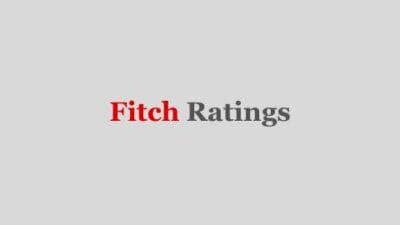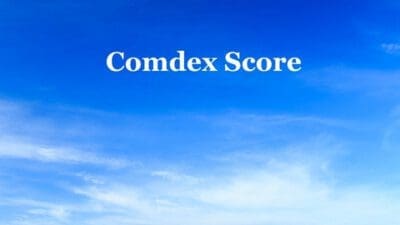It is not uncommon for many people to overlook insurance company ratings and reviews when buying life insurance coverage.
Yet, financial ratings for life insurance companies are important because they tell you how likely a company is to pay a death benefit if something happens to you.
We will provide a comprehensive guide to understanding each independent rating agency that evaluates the life insurance industry.
quick link navigation
- The importance of life insurance ratings
- The factors impacting the ratings of insurance companies
- A.M. Best Rating Scale
- Moody’s Investor Services
- Standard & Poor’s Insurance Ratings
- Fitch Ratings Scale
- Weiss Insurance Ratings
- Easy to understand Comdex Score
- Comparing the ratings of life insurance companies
- FAQ: Ratings of Insurance Companies
Ratings of Insurance Companies Explained
Many insurance shoppers might believe that resources like the Better Business Bureau or Consumer Reports would provide ample information on premier insurance companies.
However, independent rating agencies are the primary sources for evaluating life insurance companies.
These agencies offer invaluable insights to policyholders by assigning a letter grade reflecting each company’s financial stability and ability to fulfill claims.
Although their rating systems vary, they generally assess factors such as an insurer’s financial reserves and the balance between premiums collected and claims settled.
It’s important to remember that these ratings can fluctuate for several reasons, such as economic shifts, regulatory changes, or specific company-related issues.
For instance, a company might see its rating downgraded if it faces financial difficulties, accumulates too much debt, or undergoes significant changes in its business model or risk exposure.
On the other hand, insurance companies that improve their financial performance or market position could see their ratings upgraded over time.
 Factors Impacting Insurer Ratings
Factors Impacting Insurer Ratings
Insurance company ratings provide a comprehensive view by considering various critical aspects that indicate the insurer’s financial health and operational stability.
While every insurer has distinct challenges and advantages, examining the qualities of highly rated companies offers valuable perspectives when selecting a provider.
- Substantial capitalization, ample liquidity, and limited debt
- Steady profit margins and consistent revenue growth over time
- A wide range of products offered across various distribution networks
- Effective underwriting discipline and risk management strategies
- Leadership with extensive experience
- A strong brand identity coupled with customer loyalty
The top five insurance rating agencies are renowned for their rigorous analysis and evaluation of insurance companies’ financial strength and creditworthiness.
The list agencies include A.M. Best, Fitch Ratings, Moody’s Investor Service, Standard & Poor’s, and Weiss Ratings.
To assess insurance companies effectively, it’s crucial to consider ratings from various agencies. Each agency offers a distinct viewpoint on insurers’ financial stability, using its own rating scales and evaluation criteria.
 AM Best Life Insurance Ratings
AM Best Life Insurance Ratings
Founded in 1899 and headquartered in New Jersey, A.M. Best is the only rating agency dedicated exclusively to the insurance industry.
The U.S. Securities and Exchange Commission (SEC) and the National Association of Insurance Commissioners (NAIC) have designated AM Best as a nationally recognized rating company.
A.M. Best utilizes a unique rating scale that ranges from A++ to F to grade life insurance companies that subscribe to their interactive service.
We recommend choosing insurance companies with Financial Strength Ratings (FSR) from A++ to A, which indicate exceptional financial stability and the ability to meet policyholder obligations.
The agency not only assigns letter grades to insurers but also assesses their balance sheet strength, operational performance, and business strategy to give them a positive, negative, or stable outlook.
You can visit the AM Best Ratings Lookup for up-to-date information regarding any insurer’s current financial standing.
 Moody’s Investor Services
Moody’s Investor Services
Established in 1909, Moody’s Investors Service has become one of the world’s premier credit rating agencies.
Renowned for its rigorous analysis of banks, bond funds, money markets, and insurance carriers’ financial stability, Moody’s plays a crucial role in helping consumers and investors make informed decisions.
Moody’s provides annual insurance financial strength ratings that gauge an insurer’s creditworthiness and claims-paying ability.
This evaluation involves a detailed review by an analytical team, followed by confirmation from a review committee to ensure consistency in grading.
Insurance company ratings range from Aaa to C, with Aaa and Aa indicating excellent financial health. At the same time, insurers rated at C are seen as financially unstable with a high risk of defaulting on obligations.
For those interested in checking the reliability of an insurer, Moody’s website offers valuable insights into their ratings and overall financial stability.
 Standard & Poor’s Insurance Ratings
Standard & Poor’s Insurance Ratings
Standard & Poor’s (S&P), a renowned rating agency with over 150 years of history, offers crucial insights into the financial robustness of lie insurance companies.
The S&P rating system assigns grades from “AAA” to “D,” representing the spectrum from highest to lowest in terms of financial stability.
We recommend choosing an insurance company with a high S&P rating, such as “AAA” or “AA,” ensuring you’re partnering with a firm capable of standing by its commitments.
However, many insurers with S&P ratings of A and BBB are deemed trustworthy and can provide the coverage you need.
Visit the website dedicated to insurance ratings for detailed information on any insurance company’s Standard & Poor’s ratings.
 Fitch Ratings Scale
Fitch Ratings Scale
Launched in 1913 and headquartered in New York City, Fitch Ratings is a key component of the Fitch Group.
Fitch rates insurance companies and performs vital market research for investors and financial experts.
Fitch employs a meticulous evaluation process that considers management strategies, economic patterns, and historical performance when assessing life insurers.
Their assessments are conducted by seasoned financial experts who leverage specific criteria to determine an insurer’s creditworthiness.
Notably, Fitch Ratings pioneered the “AAA” to “D” rating scale for insurance companies, with AAA and AA being among the top tiers.
For those seeking coverage, these prestigious ratings signify a solid capability to fulfill future claims obligations.
The official website is an excellent place to start for comprehensive access to Fitch Ratings or its extensive research reports.
Weiss Insurance Ratings
Weiss Ratings evaluates life insurance companies based on key financial metrics such as capitalization, investment safety, profitability, liquidity, and stability.
These assessments are derived from annual and quarterly reports filed with state insurance commissioners and sometimes directly from the insurers themselves.
A single low score on any metric can lead to a reduced rating, signaling potential financial instability.
Weiss simplifies the process for consumers to gauge an insurance company’s fiscal health using a grading system ranging from A to F.
Weiss Ratings publishes yearly lists ranking insurers from strongest to weakest. Companies earning a B or above are deemed strong and carry a low risk of failing.
On the other hand, those rated C or lower pose significant risks and should not be used by those seeking new insurance policies.
For those wanting to make informed insurance decisions, further information is available on the Weiss website.
Comdex Score
If all the traditional ratings perplex you, there is a simple way to sift through the confusion with Condex ratings.
Do you Need Life Insurance Quotes?

- Select Duration
- Select Amount
- Press Get Quote
 Highly Rated Life Insurance Companies
Highly Rated Life Insurance Companies
When shopping for an insurance policy, it is a good idea to choose insurers that consistently receive high marks across different rating platforms.
Yet, it’s essential not to let financial strength overshadow other critical factors such as cost-effectiveness, coverage diversity, and customer service excellence.
For example, J.D. Power and Consumer Reports can provide valuable insights into how insurers compare in terms of service quality, claims management efficiency, and overall consumer contentment.
Moreover, exploring online feedback through platforms like Yelp or the Better Business Bureau can also shed light on real user experiences with particular insurers.
Ultimately, choosing an insurance provider should balance strong financial health with superior client satisfaction, ensuring you get a reliable partner and one that aligns with your specific needs and expectations.
Insurance Company Ratings Chart
| COMPANY | BBB | AM Best | JD Power |
|---|---|---|---|
| AIG | A+ | A | 718 |
| AXA Equitable | A+ | A+ | 752 |
| Banner Life | A+ | A+ | N/A |
| Brighthouse | A+ | A+ | N/A |
| Guardian Life | A+ | A++ | 760 |
| John Hancock | A+ | A+ | 739 |
| Lincoln Financial | A+ | A+ | 744 |
| Mass Mutual | A+ | A++ | 780 |
| Metlife | B- | A+ | 780 |
| Mutual of Omaha | A+ | A+ | 766 |
| Nationwide | A+ | A+ | 806 |
| Pacific Life | A+ | A+ | N/A |
| Principal Financial | A+ | A+ | 774 |
| Protective | A+ | A+ | 742 |
| Prudential | A | A+ | 770 |
| SBLI | A+ | A+ | N/A |
| Transamerica | A+ | A+ | 720 |
 FAQ: Ratings of Insurance Companies
FAQ: Ratings of Insurance Companies
How often are the ratings of insurance companies updated? Rating agencies generally conduct annual reviews of insurance companies. However, they may update their ratings more frequently if significant changes or events affect the company’s financial stability.
Where can I find information about a company’s rating? You can find detailed reports on a company’s rating through the websites of various rating agencies, often available for free or at a small cost. Additionally, visiting the company’s website or contacting them directly may provide further insights into their rating.
How often do insurance companies fail? While it’s rare, insurers can go bankrupt. If this happens, the state guaranty association intervenes to uphold the policy terms, subject to state-specific caps, often up to $300,000 for life insurance coverage.
How is new technology assisting with financial ratings? One trend to watch is the increasing use of data analytics and artificial intelligence in ratings. By leveraging these tools, rating agencies can analyze insurers’ financial performance, risk exposures, and market conditions to develop more predictive rating models.
Trending Life Insurance Reviews
-
Affordable Life USA offers comprehensive life insurance solutions to families and business owners throughout the United States.
Our founder, Eric Van Haaften, developed his passion for quantitative analysis while earning his business degree from Ferris State University, which laid a strong foundation for his analytical approach to financial planning.
Eric has obtained a professional LUTCF designation, awarded by the National Association of Insurance and Financial Advisors and the American College of Financial Services.
Another professional accolade is qualifying for the prestigious Million Dollar Round Table. Eric also serves as the treasurer of the Senior Sing Along charity.
Eric Van Haaften, LUTCF

-
Affordable Life USA
Email: eric@affordablelifeusa.com 2524 Wodmeadow Grand Rapids, MI 49546
1-877-249-1358
Affordable Life USA, LLC ™ © 2025 All rights reserved

 Factors Impacting Insurer Ratings
Factors Impacting Insurer Ratings AM Best Life Insurance Ratings
AM Best Life Insurance Ratings Moody’s Investor Services
Moody’s Investor Services Standard & Poor’s Insurance Ratings
Standard & Poor’s Insurance Ratings Fitch Ratings Scale
Fitch Ratings Scale

 Highly Rated Life Insurance Companies
Highly Rated Life Insurance Companies FAQ: Ratings of Insurance Companies
FAQ: Ratings of Insurance Companies


